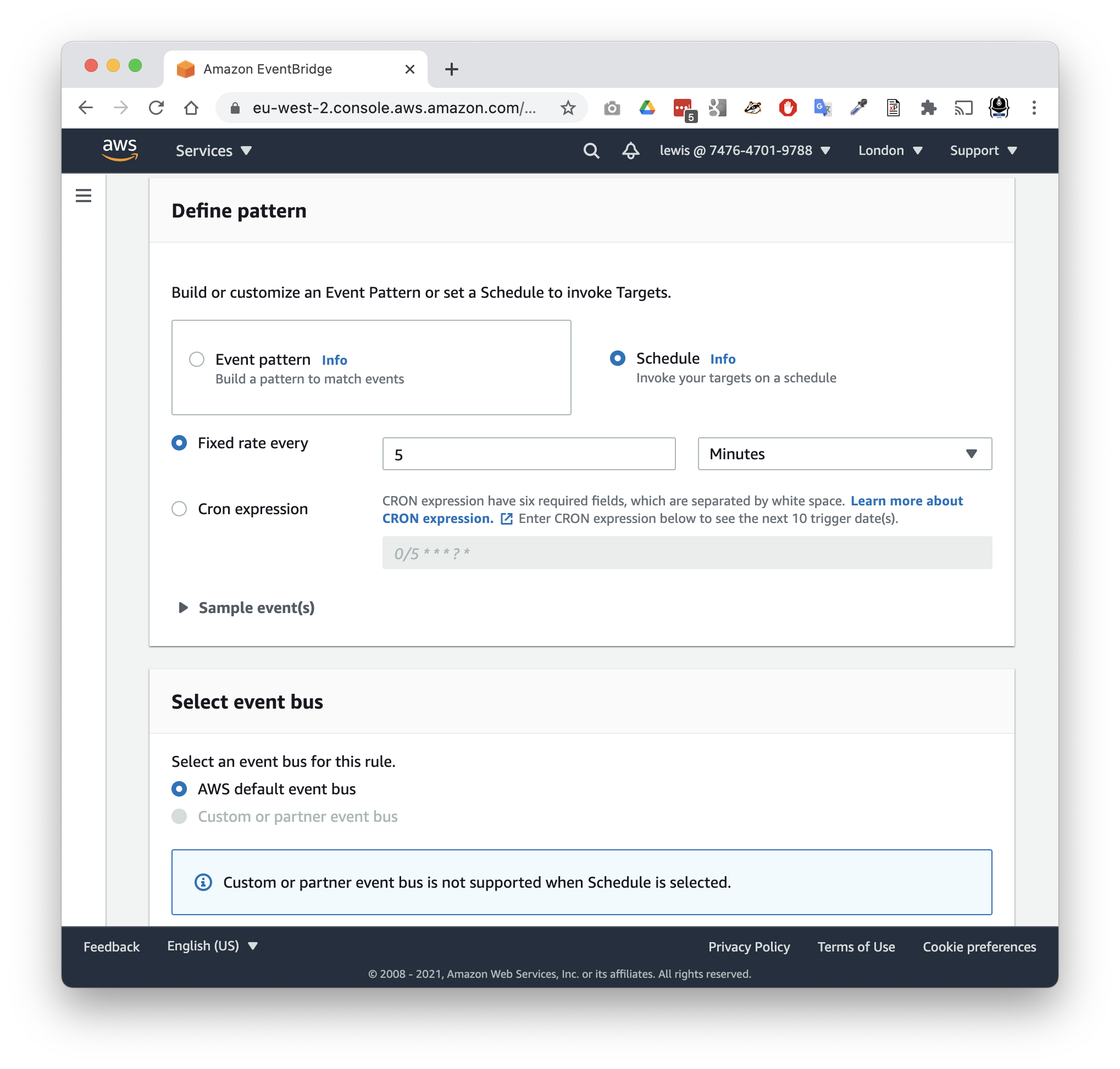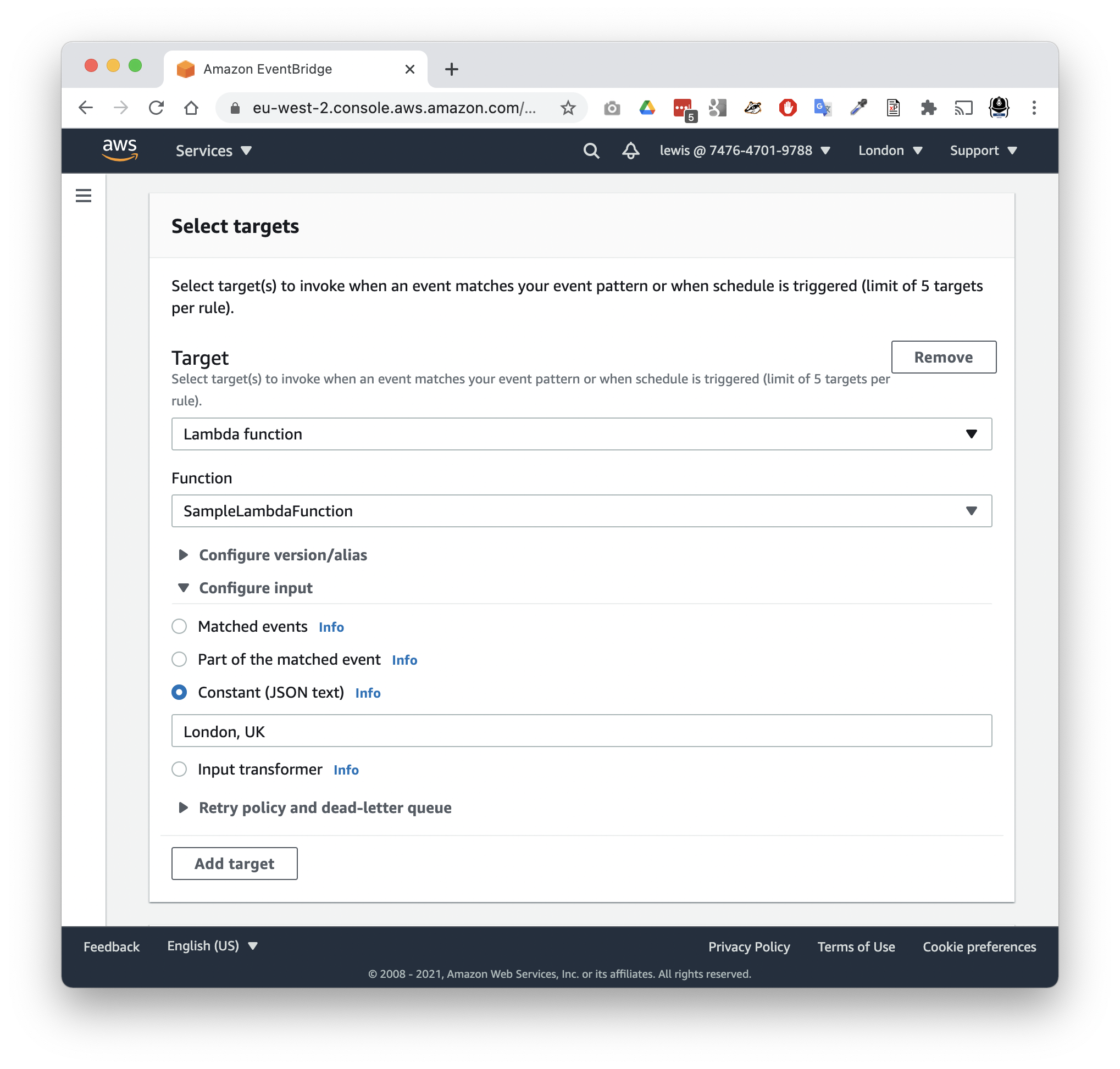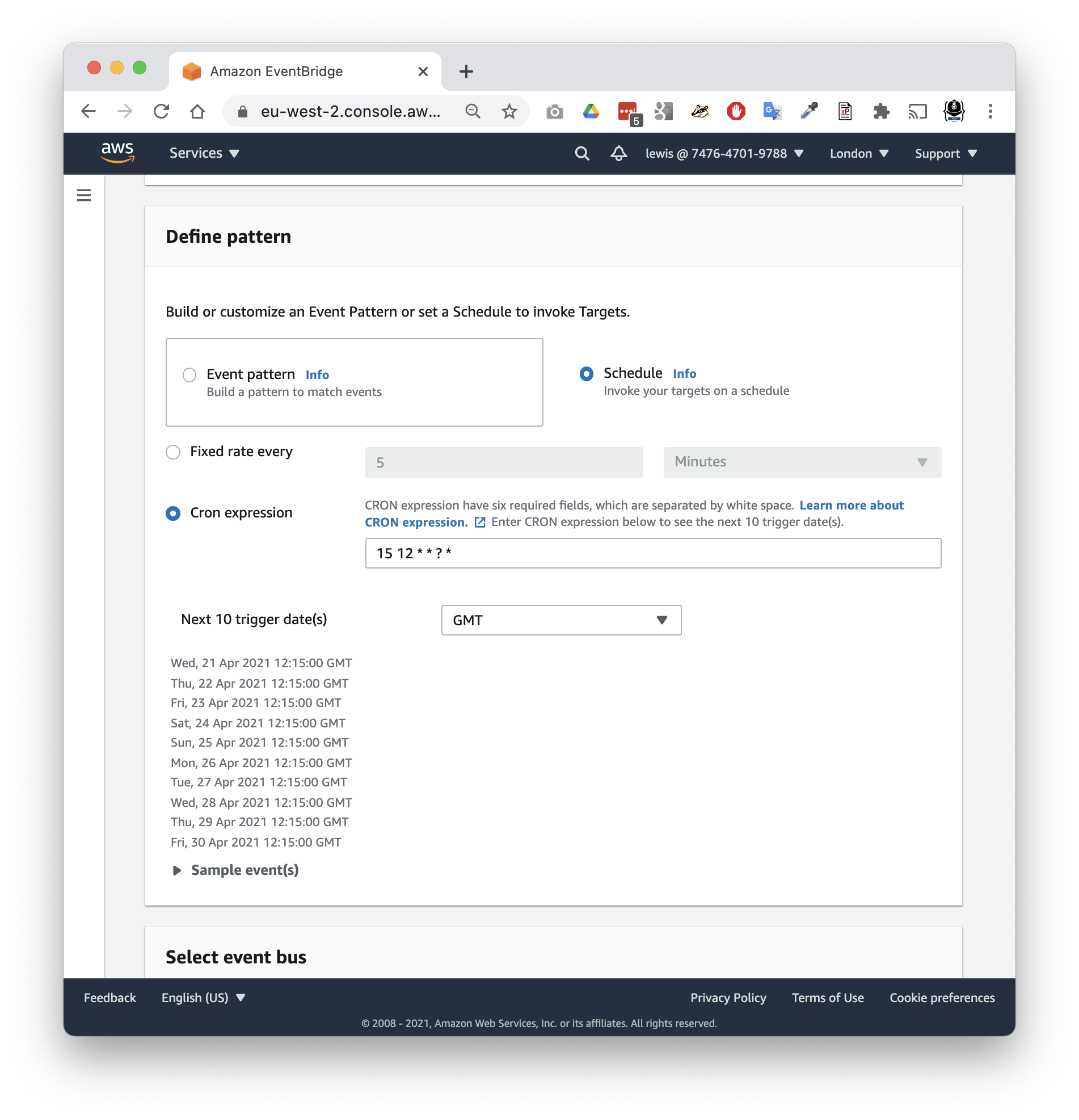In part 5, we amended our Lambda to write to an S3 bucket; and in this part, we’ll explore triggers to run it regularly.
Let’s build an AWS Lambda in C#
Part 6: Scheduling your Lambda
Most Lambdas aren’t invoked the way we’re testing ours… Instead, triggers cause them to run when certain events happen (perhaps a new file in an S3 bucket with data to work on, a timer, or some other input).
The AWS EventBridge service can provide scheduled trigger events for a variety of services, including Lambdas.
Create a trigger
We’re going to create a trigger that will run our Lambda once per day, for the city of our choice.
First we’ll create it, and schedule it to run every 5 minutes. This will allow us to test that it’s working. Then, we’ll go back and revise it to run on a daily basis.
- Visit the Amazon Eventbridge service in the AWS console.
- Select Rules to see all current rules for your account, and tap
Create rule
- Provide a name, eg.
trigger-sample-lambda-daily
- In the Define pattern section, select Schedule
- You could provide Cron expression for a nuanced schedule, but we’ll use the Fixed rate option.
- Configure the Fixed rate schedule to run every 5 minutes.
- Skip the Select event bus section (scheduled events always run on the AWS default event bus).

- In the Select targets section, we’ll instruct the event to trigger our Lambda.
- In Target, select: Lambda function
- A Function selection appears, choose our Lambda: SampleLambdaFunction
- Now expand the Configure input options.
- Select Constant input and provide:
"London, UK"

Correction to the screenshot above: you must enclose "London, UK" in quotation marks in order for it to be accepted as a JSON string.
- Finally, click
Create to create your trigger.
Check the logs
Having created the trigger, it’ll run every 5 minutes, so wait up to 5 minutes to view the logs.
- Navigate to the CloudWatch service in the AWS console.
- There, under Log groups, click into the
/aws/lambda/SampleLambdaFunction group.
- You should find a log stream from the past 5 minutes.
- Take a quick look to make sure it seems ok.
Next, we’ll check S3 for an ouptut file.
- Navigate to the S3 service in the AWS console.
- There, under Buckets, click into the
sample-lambda-storage bucket.
- If the Lambda was successful, you should see a new object, created in the past 5 minutes.
- You can select and Download the object with the
Actions menu button to ensure it has the content you expect.
Update the schedule
Now that we’re satisfied that the scheduled event is working, it’s time to adjust it to run a little less frequently.
- Return to the Amazon EventBridge service in AWS.
- Select Rules, and click into the new rule, ie.
trigger-sample-lambda-daily
- Tap
Edit to modify it, and head down to the Define pattern section.
You can read more about scheduling expressions to figure out the best for your use.
Cron expressions are pretty nuanced, and you can learn about their syntax in the Schedule Expressions for Rules documentation.
We’re going to use one of the example cron strings:
15 12 * * ? *
This can be interpreted as a set of positional parameters:
| Minutes |
Hours |
Day of month |
Month |
Day of week |
Year |
| 15 |
12 |
* |
* |
? |
* |
It will run at 12:15pm (UTC) every day.
- Select Cron expression and provide the expression:
15 12 * * ? *
As soon as you provide an expression, the schedule section will display the next 10 upcoming trigger times to help you check your cron expression. If it’s correct, you’ll see it scheduled to run at 12:15:00 GMT on each of the next 10 days.

- Finally scroll to the bottom, and tap
Update to confirm the change.
The event has now been altered to run every day at 12:15pm GMT.
Conclusion
Congratulations! You’ve created a Lambda that checks the weather at your chosen city, using a secret API key, and then stores that information in an S3 bucket. You’ve scheduled an event that will trigger it every day at 12:15pm, and checked that it’s working.
Where next?
There are plenty of other services your Lambda could interact with, and AWS provide a number of AWSSDK.* nuget library packages to help you communicate with other AWS services, too.
For instance, you might consider establishing a database in RDS and then storing the temperature information for your chosen city there so that you can access it and reason about it.
Hopefully this tutorial has given you a little more information and experience than the usual “hello world” examples, and hopefully some insights into how you could build useful tools using AWS and .NET technologies.

